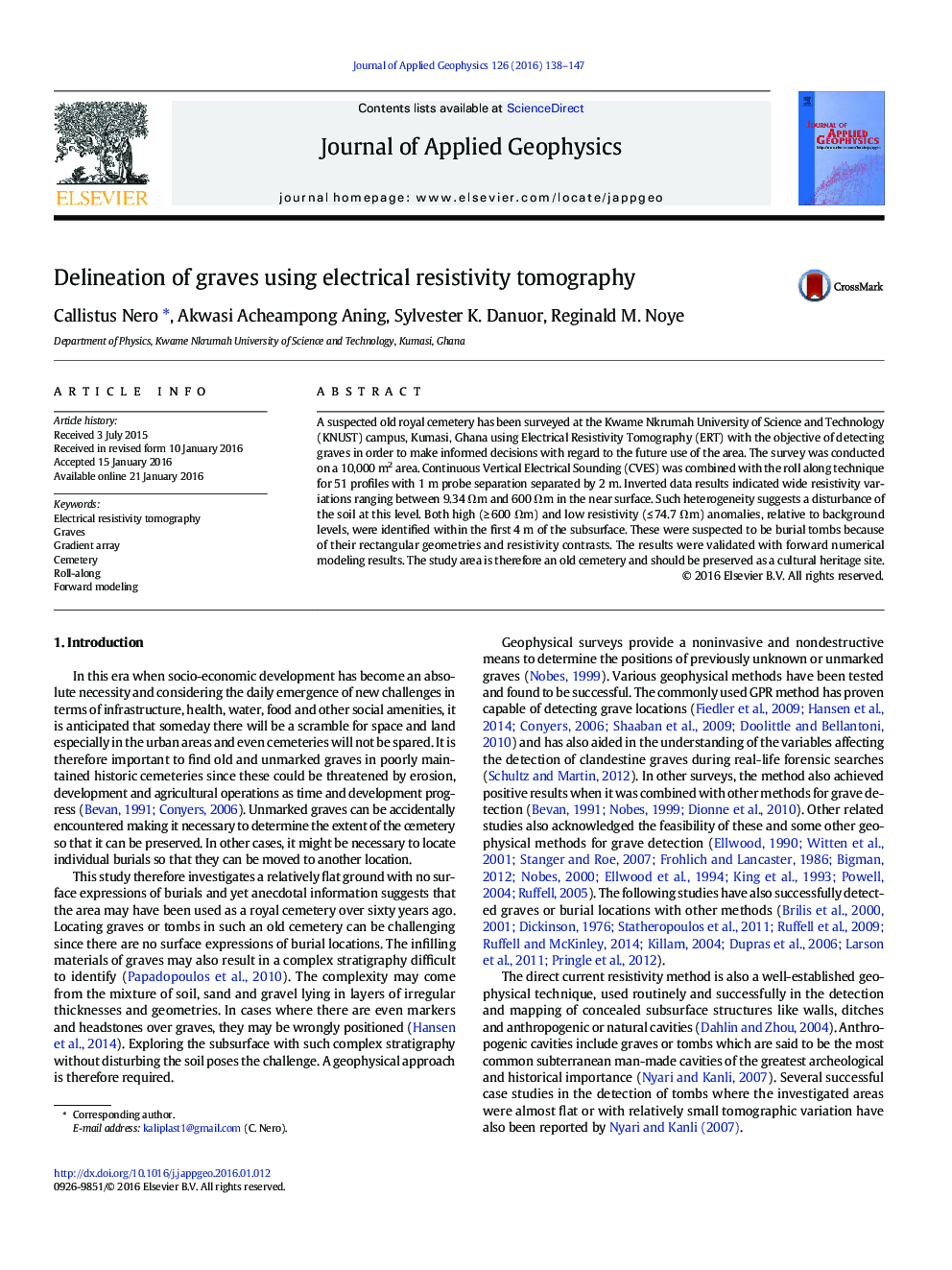| Article ID | Journal | Published Year | Pages | File Type |
|---|---|---|---|---|
| 4739813 | Journal of Applied Geophysics | 2016 | 10 Pages |
•Some rectangular anomalies suspected to be graves were delineated.•Electrical resistivity tomography was conducted over a 10,000 m2 area.•2D ERI profiles are collated to 3D dataset and horizontal slices are generated.
A suspected old royal cemetery has been surveyed at the Kwame Nkrumah University of Science and Technology (KNUST) campus, Kumasi, Ghana using Electrical Resistivity Tomography (ERT) with the objective of detecting graves in order to make informed decisions with regard to the future use of the area. The survey was conducted on a 10,000 m2 area. Continuous Vertical Electrical Sounding (CVES) was combined with the roll along technique for 51 profiles with 1 m probe separation separated by 2 m. Inverted data results indicated wide resistivity variations ranging between 9.34 Ωm and 600 Ωm in the near surface. Such heterogeneity suggests a disturbance of the soil at this level. Both high (≥ 600 Ωm) and low resistivity (≤ 74.7 Ωm) anomalies, relative to background levels, were identified within the first 4 m of the subsurface. These were suspected to be burial tombs because of their rectangular geometries and resistivity contrasts. The results were validated with forward numerical modeling results. The study area is therefore an old cemetery and should be preserved as a cultural heritage site.
